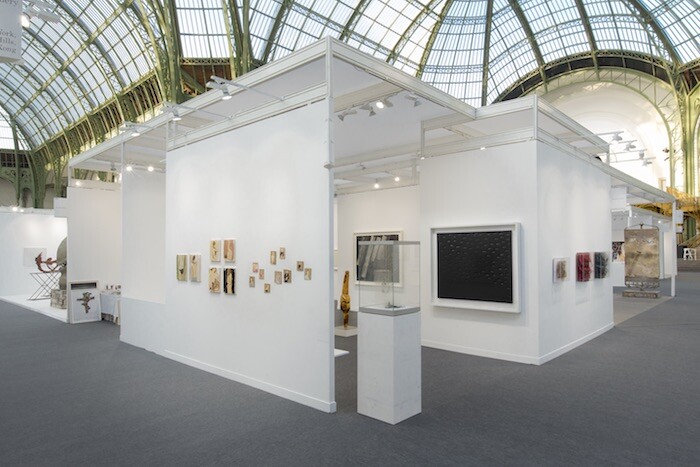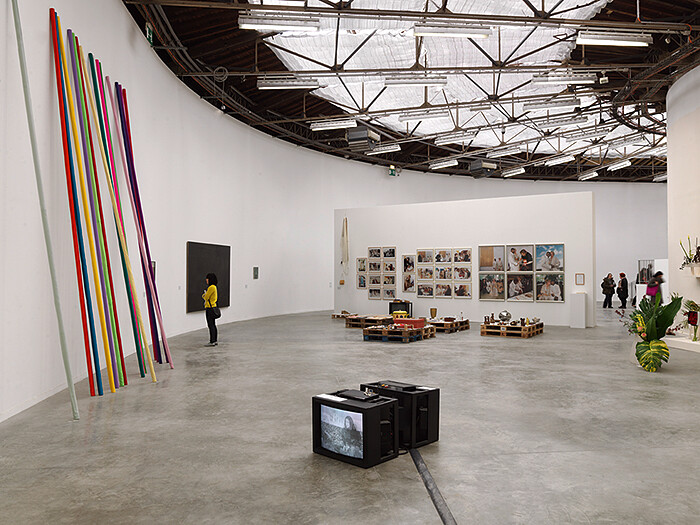Categories
Subjects
Authors
Artists
Venues
Locations
Calendar
Filter
Done
September 3, 2019 – Review
“City Prince/sses: Dhaka, Lagos, Manila, Mexico City and Tehran”
Sohrab Mohebbi

Just when certain worn-out frameworks of exhibition making appear to finally become obsolete, they are repackaged and mounted once again. The exhibition “City Prince/sses: Dhaka, Lagos, Manila, Mexico City and Tehran” seems like a throwback to 1990s curatorial expansionism, if not straight up nineteenth-century colonialism. Preliminary questions such as why these cities, why now, why in Paris, are not addressed, and no attempt is made to clarify the geographic focus of the show. The curatorial statement for the exhibition has deftly appropriated the hackneyed language of nonfixity and fluidity and eschews the more anthropological tone of the ’90s. Instead it presents a soft exoticism that is nominally reflexive, sealed in postcolonial lingo, and avoids salting the historical wounds of the local context by its geographic treatment, opting not to include any former French colonies. Therefore, the five cities’ “cultural, political and social singularities teem with numerous narratives which are all side-tracks providing glimpses into their identities, devoid of anything that could be univocal.” Yet the statement makes clear that the dissecting, omnipresent curatorial eye cut through these heterogeneous multiplicities, excavating glimpses into their equivocal identities. From this critical vista, the curator could not only present this multiplicity of positions, but …
October 20, 2017 – Feature
Paris Roundup
Tom Jeffreys

The wide eyes and open mouth of a child are a reminder that, even at art fairs, there is still space for the occasional moment of wonder. The girl has good taste: she’s enthralled by Endless (2012), a sculpture by Claire Morgan at the FIAC booth of Galerie Karsten Greve. A three-dimensional grid of dead flies has been suspended in mid-air on vertical lines of nylon weighted with little pieces of lead. Around them, similarly hung dandelion heads form a slim, delicate frame. It is a gossamer-light and enchanting piece, whose dark eco-political agenda has been lent new urgency by recent research into insect decline.
Animals seem, nonetheless, to be scampering throughout Paris this week. Also at FIAC, London’s Sadie Coles’ booth lures visitors in with Rudolf Stingel’s Untitled (2015), a black-and-white painting of a photograph of a squirrel. At the Musée de la Chasse et de la Nature, Sophie Calle interweaves the personal, the political, and the philosophical through a series of interventions, including covering the museum’s famous stuffed bear in a white shroud. Especially intriguing is a series of photographs (“Liberté Surveillée,” 2014) of deer, pheasants, and hares taken at night by automated cameras sited on the bridges and …
December 19, 2013 – Review
Pierre Huyghe at Centre Pompidou and Philippe Parreno’s “Anywhere, Anywhere Out of the World” at Palais de Tokyo
Vivian Sky Rehberg

I hate to admit this now, but my eyes rolled involuntarily when I first heard that the Centre Pompidou and the Palais de Tokyo would be holding solo exhibitions of work by Pierre Huyghe and Philippe Parreno, since both artists have already had major shows in Paris museums, but it turns out to be longer ago than I thought (2006 for Huyghe and 2009 for Parreno). At the same time, I also harbored the fantasy that the Musée d’Art Moderne de la Ville de Paris would suddenly wager on a historic trifecta and simultaneously unveil a Dominique Gonzalez-Foerster exhibition, thus providing comparative mid-career overviews of these three established artistic associates, all of whom are at the top of their aesthetic game. As it stands, Huyghe and Parreno’s respective exhibitions generously acknowledge and include a whole host of friends (Gonzalez-Foerster among them), influences, iconic figures, and collaborators, as well as myriad living creatures, in Huyghe’s case, and an abundance of phantoms, in Parreno’s.
If the art world, and the French art world in particular, has a reputation for being intimidatingly cliquish or clannish, a remarkable and surely unintentional achievement of these exhibitions is that they testify to the singular importance of artistic …
April 26, 2012 – Review
La Triennale, “Intense Proximity”
Chris Sharp

Whatever one may say about this exhibition, it cannot be denied that it possesses the virtue of necessity. This sense of necessity is made all the more evident by its contrast with the ignominious and highly anachronistic nationalism of the last two vague and ultimately superfluous triennials, both of which were limited to artists of French origin or living in France, and which were consequently less motivated by any real or imagined stakes than a desire to oxymoronically assert France’s relevance on the international scene. Coherent to a fault, this monumentally ambitious triennial has more elevated objectives in mind: it seeks to respond to the complex cultural exigencies, multifarious ethnic tensions, and artificial post-national dilemmas of its current French, European and international context, while playing off of and taking a deep bow to France’s rich anthropological heritage. Organized under the matter-of-fact stewardship of Okwui Enwezor with the assistance of curators Mélanie Bouteloup, Abdellah Karroum, Emilie Renard, and Claire Staebler, “Intense Proximity” is essentially predicated upon the following global and post-colonial predicament: what happens when the distance between the colonizer and the colonial subject, or, in broader strokes, near and far, visible and invisible, collapses? This leads to what Enwezor identifies …
